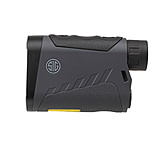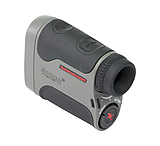The first thing to know about purchasing any laser range finder is that the maximum ranges listed for a particular unit are for use with large, smooth, reflective targets under ideal atmospheric conditions, which means cloudy and clear. You may get a reading of 1000 yards off a light colored building but only be able to read a tree or a deer at half that distance or less and a flag on the green at a couple hundred yards maximum. Golf range finders are first priority range finders, meaning that they read the closer of two objects in the aiming area.![]()
Key Factors to Consider
Purpose of Use
Determine whether the range finder will be used for casual play or competitive tournaments. Recreational golfers may prioritize affordability and ease of use, while tournament players often require advanced features like pin-seeking technology and slope adjustment.
Types of Golf Range Finders
Laser Range Finders: Most common for golf, offering accuracy and quick measurements.
GPS Range Finders: Provide distances to various points on the course but may lack precision compared to laser models.
Hybrid Models: Combine features of both laser and GPS, offering versatility
Accuracy
Look for models that guarantee accuracy within one yard. This precision is crucial for making the right club choice.
Range and Magnification
Consider the effective range (typically up to 1500 yards) and magnification power (usually between 4x to 7x). Higher magnification is beneficial for targeting distant objects.
Display Quality
Ensure the display is clear and easy to read in various lighting conditions. A bright, high-contrast display enhances usability on the course.
Size and Portability
Choose a lightweight model that is easy to carry, especially if you plan to travel frequently. Some models come with carrying cases or can attach to a golf cart for easy carry.
Get Your Game Right
Choosing the right golf range finder can significantly enhance your game by providing accurate distance measurements. By considering your specific needs, understanding different types of range finders, and evaluating essential features like accuracy, display quality, and portability, you can make an informed purchase that aligns with your golfing goals. Check out our guide on Hunting vs. Golf Range Finders to learn more about the differences to help guide your purchasing decision. Also, browse all of our golf equipment for sale to find other great gear to up your game.











